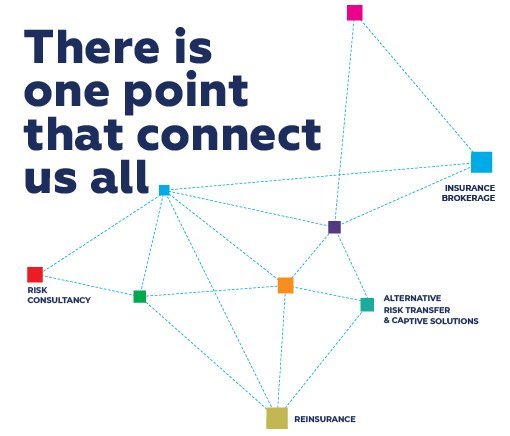Technology is changing the insurance industry in fundamental and exciting ways.
Customers are forging new expectations based on their experiences with other sectors. New risk ecosystems are emerging, challenging traditional value chains. And our role as risk experts is being expanded by sensors, mobile technology and big data capabilities that are redefining the very notion of insurance.
Retail insurance has reached mainstream adoption in many of these areas. For large commercial and international program business, digital transformation is now starting to happen, with an accelerating pace over the last 12 months. This revolution is powered by new technologies that are changing the business model, increasing efficiency and consistency, improving service quality and making it possible for insurers to better interact with a whole range of stakeholders.
Optimizing a fragmented IT landscape
In large commercial business, insurers often face a complex, fragmented IT landscape, including IT legacy systems with limited automation capabilities. Many highly repetitive tasks in the end‑to‑end process are manual and include a significant amount of data re‑keying from one system to another. Robotic Process Automation (RPA) is a great enabler to driving efficiencies and improving speed and quality of service delivery. It can optimize this landscape, with its capability to take on many of the repetitive processes, freeing up highly skilled people to work on more complex and bespoke aspects of an international program.
Dealing with unstructured data
Insurers are faced with large quantities of unstructured data. For instance, submissions come in a variety of formats, to be manually reviewed by underwriters and risk engineers, who structure and manually key these data into the various underwriting, pricing or risk engineering systems.
Cognitive computing (CC), more specifically natural language processing (NLP) capabilities, bring unstructured data sources together, distil the intended semantic and properly structure the information to support risk and claims experts with their risk assessment an decision making. NLP capabilities can also be applied to automated research of internal or external data, to provide insurers with relevant supplementary information and create a holistic customer risk profile. This can include financial reports, news feeds, expert reports, audit reports, or internal analytics sources.
Improving consistency between customer intent and coverage
International programmes are highly complex processes and for risk managers it is crucial to have certainty that their original intent is reflected in all the various insurance policies, ensuring there are no coverage gaps. Even in this highly complex area CC can enable an automatic review of the key elements of an insurance program (coverage, exclusions, deductibles or limits) across all local policies. Various jurisdictions, regulations and languages can be taken into account when comparing the local policies with the master policy, as well as with the original customer intent.
Turning data into insights.
Insurers, brokers and customers are starving for meaningful insights and industry benchmarking capabilities. Big data and analytics can shape the huge amounts of data available in the industry into meaningful insights. They give customers a clear overview oftheir portfolio, help them to anticipate risk trends and developments within their company, industry or geographies and enable them to put in place appropriate risk mitigation actions. Insights also support underwriters, risk engineers and claims handlers in their risk assessment, pricing or decision‑making.
Industrializing the current business model and creating a new ecosystem
New technologies enable a high level of processing and decision‑making automation even for the highly complex business segment of international programs. Taking these technologies to the next level not only builds the foundation for self‑servicing capabilities and straight‑through quoting and claims handling processing – but can also turn machines supporting decision‑making into machines making independent decisions.
Industrialisation, already common in the retail segment, is now being applied to the international program space. Examples include self‑servicing channels leveraging smart chatbots, cognitive algorithms and analytical capabilities providing the potential for a fully automated risk selection and insurance purchasing process.New technologies can also reduce the distance between customers, brokers and insurers. Thanks to Application Programming Interface (API) and Distributed Ledger/Blockchain technology, all collaborating parties can become much more interlinked. Whilst today’s information and transactional exchange is largely defined by email and attachment traffic, it is now moving towards a system‑to‑system connectivity and ultimately towards a ‘platform‑type’ thinking. This creates a completely new ecosystem, where all players are interconnected in real‑time, all sharing the relevant source of truth, revolutionizing the insurance industry.
Challenges and Opportunities
The exciting digital transformation journey in international programs has begun and is picking up pace. There are challenges along the way. Data standards, governance, regulation, ownership, data and cyber security all need to be addressed in this process. One thing is clear though: digital capabilities bring opportunities that insurers cannot ignore; they enable compelling new set‑ups and business models and create efficiencies in the value chain. They will play a role, they are relevant, and they are here to stay.
Note: Excerpt from the article "Digital capabilities transforming global programmes" previously published in Commercial Risk Online.
By Armin Shaefer And Carin Gantenbein, Zurich Commercial Insurance



